|
|
Post by Quick Draw McGraw on Sept 20, 2024 11:46:14 GMT -5
Sometimes, it can be hard to find data out there. Does anyone use software like Quick Loads? I'm trying to find out if there is a program that has the ability for me to punch in a cartridge, a projectile, and possibly a powder to determine what is safe and what performance can be expected. I keep meticulous notes on my reloads (seriously, my spreadsheets are pretty intense) but I'd love to be able to not have my reloads be trial-and-error. Does anyone have recommendations?
|
|
|
|
Post by squigz on Sept 20, 2024 12:40:04 GMT -5
I use Quickload daily to just play around. Always dreaming and scheming.
It's great because you can customize certain cartridges' that may not be part of the catalog or even throw in your own bullet profiles if there isn't one out there already.
Now, I will note, I do not follow it word for word; I continue to work up my own loads in a trial and error fashion because I have seen differences in the numbers, especially in subsonic loading. But this certainly gives a good starting point.
But from a overall perspective it certainly does give you a much quicker vantage of what power/bullet combination to use. Also shows case fill %, how much will be burnt in the barrel and such metrics
|
|
|
|
Post by hounddogman on Sept 20, 2024 13:31:50 GMT -5
I played around with Gordon's reloading tool while working on some 38/44 level loads. Using Longshot powder GRT showed some suspiciously low pressure compared to some of Brian Pearce's +P 38 spl.loads . So I do not trust GRT .
|
|
|
|
Post by bigbore5 on Sept 21, 2024 7:04:39 GMT -5
I use GRT to find starting loads often, but don't trust it's max loads data in any straight wall cartridges.
I've seen a few questionable loads from Quickload for handguns,too. But it's currently supported and upgraded. The man who ran Gordon's passed away and it hasn't been updated.
|
|
|
|
Post by jensonev on Sept 21, 2024 14:48:31 GMT -5
I use it quite a lot, but its output is only as good as the data you feed it.
That means measuring and weighing your bullet, plugging in your COAL, etc and then verifying you're within the realm of sanity using your chronograph and any published data that is remotely analogous. Quickload lacks any way to account for B/C gap and doesn't have your exact chamber(loose/tight) either. Trying to play with powder burn rate to match your real world chronograph data is also a pain in the rear.
It's not gospel, but if you had an idea that's not found in print and you can find something similar then it gives you a good baseline to try.
|
|
|
|
Post by lar4570 on Sept 22, 2024 6:22:08 GMT -5
I bought Quickload back when it came on a floppy disc, still have it. It was more money than I wanted to spend, but I use it all the time and really like it. What I do for revolvers is I add the length of the cylinder to the barrel length for starting out. This usually gets me pretty close on predicted velocity. After I load and chronograph a load, then I adjust the barrel length in Quickload until I get the measured velocity. I use this Quickload barrel length when looking at other bullets or powders. It seems to get me fairly close. I have read many places that Quickload gives good predictions for bottlenecked cartridges, but the predictions for straight walled cartridges can be way off. Using the effective barrel length method mentioned above, I can usually get fairly close. Back when we used to be able to get WC820, I really liked that powder, I compared the powder profiles for AA9 and 296 then started adjusting the profile of 296 to come up with a file for WC820. This gave really close predictions for revolvers and light rifle loads also. 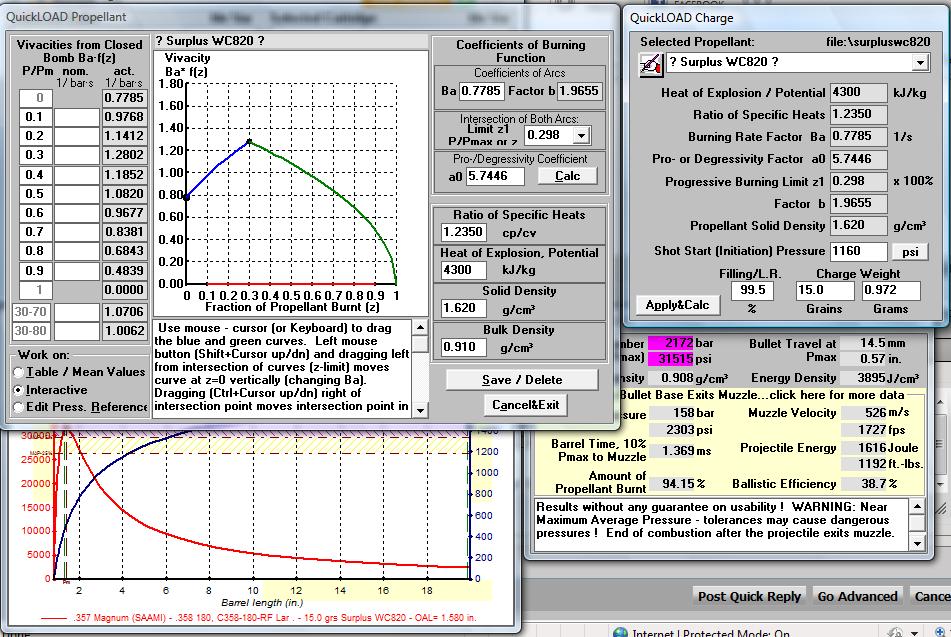 |
|
|
|
Post by contender on Sept 22, 2024 8:43:19 GMT -5
I buy reloading manuals. As they get replaced with newer printings,, my older ones are still kept for reference when something isn't in the newer books. I have never found the need to pay a lot of money for a computer program,, when I have a good library already of material to study.
If it's in the manuals,, I can enjoy the time spent testing ammo according to published data. Data that's already been tested. And I always start low & work up,, using my chrono to see what I'm actually getting.
The expense of a computer program like Quick Loads isn't worth it to me. Besides,, I'm computer stupid enough to screw it up.
And you can often get older loading manuals a lot cheaper than newer ones.
So my posting here isn't any real help where the OP has asked for help. Except to maybe look for older manuals,, & build a library. And if the data you seek isn't available,, then it's possible nobody tried it,, OR,, if they tried it,,. and it didn't provide SAFE results. I figure published data, from reputable manuals,, has a certain liability attached to them by the ones who publish such data. They test stuff with equipment that we reloaders don't have easy access to. If it wasn't safe,, they didn't publish it.
But new powders,, or foreign primers,,, or different bullets may not be easily available in new manuals. But I first look at who makes the powder,, and go to them for data if it's not published. If they don't have it,, or don't recommend it,, then I don't try it.
I guess I'm a bit too old school, & don't trust computer stuff that relies upon MY input w/o any actual real world testing being done with pressure measuring equipment.
|
|
|
|
Post by lar4570 on Sept 22, 2024 18:14:16 GMT -5
Contender, you are absolutely right. Manuals developed with actual pressure measuring equipment are the first resource a reloader should look at. Where I find Quickload most useful is for reloading combinations where there is not any established data. For instance, a Ruger Blackhawk in 45Colt and I want to shoot 405gn cast bullets that have been sized down to .452". Do I need 405s, no not really, but sometimes I just wonder "What If?" Another application for Quickload is for a standard weight bullet with more weight in the nose, so it has a shorter shank and leave more useable case capacity. This spring I built a new .358 caliber AR-15. I took .308 Win cases, cut them down to 1.71", formed a 35 cal neck and wanted to shoot Speer 180s and Hornady 200FTX. There is not any reloading data established for it. So where to start with which powders, what might be a safe start load and where to stop? If my chronographed velocities are close to the predicted velocities, then I will hope that the pressures are close also. All I can do is hope on the pressure part. I really should have bought one of the Pressure Trace units when they were availible  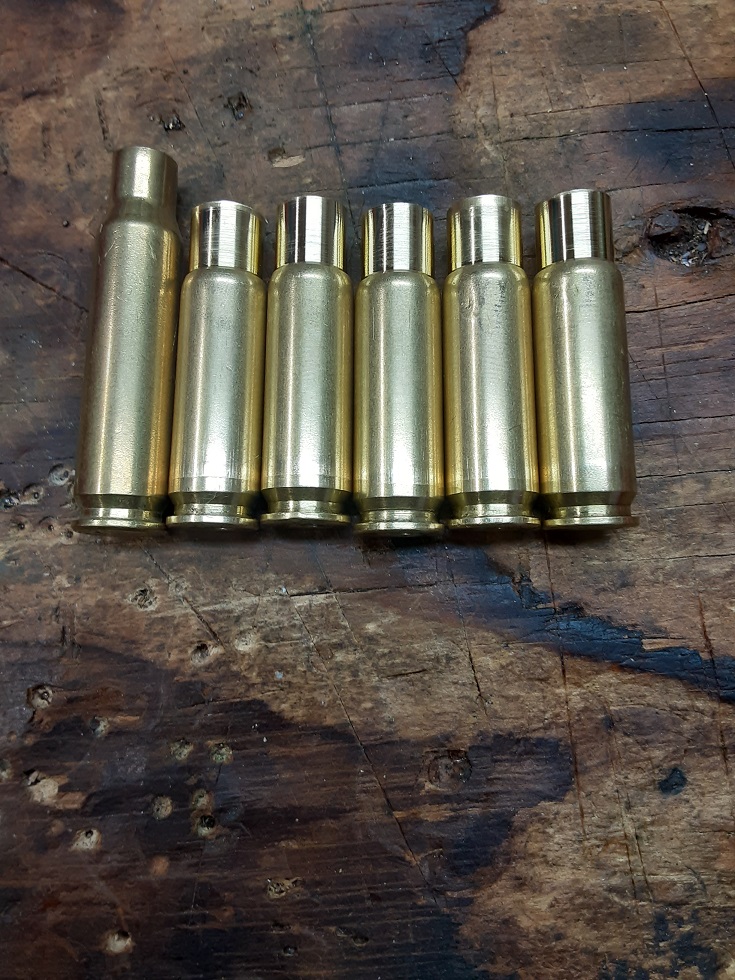 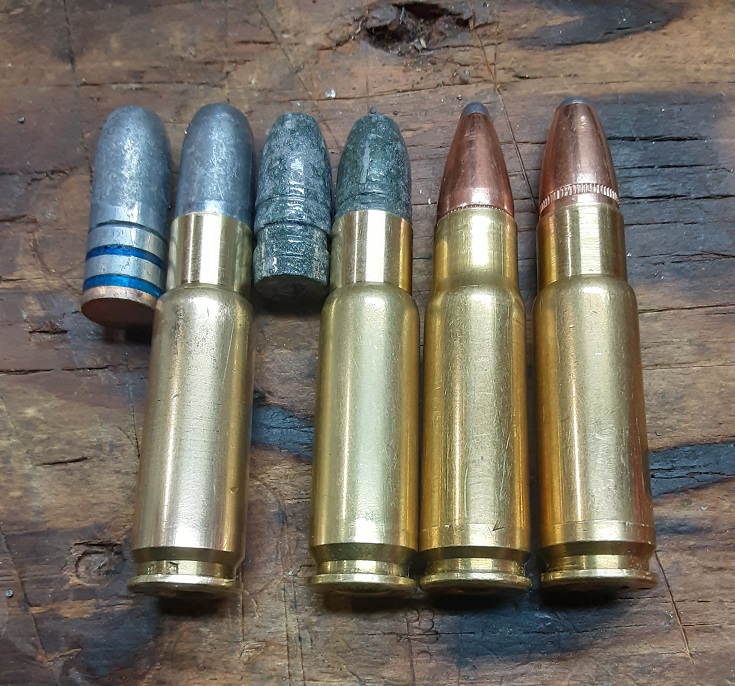 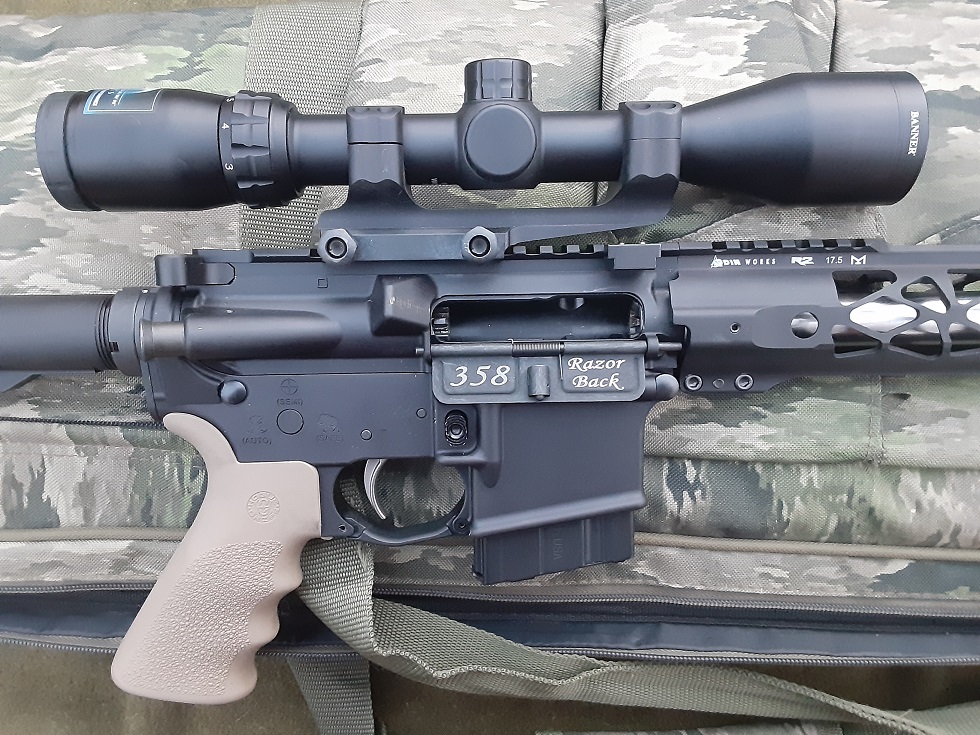 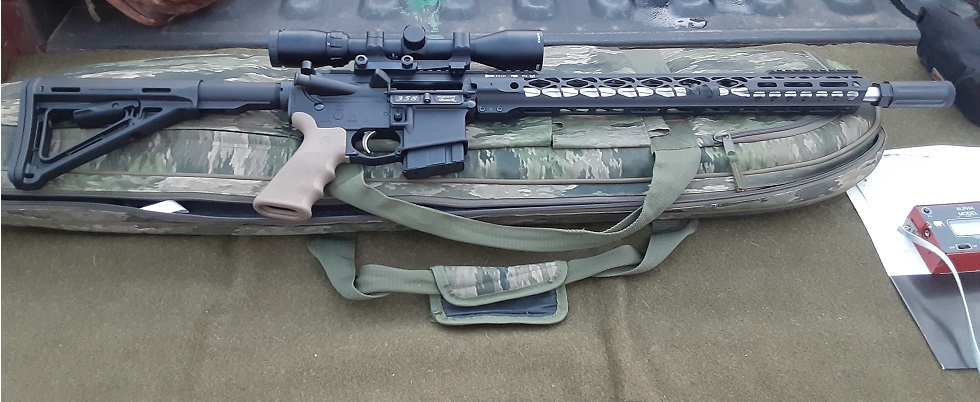 I'm pushing the Speer 180s to 2600fps and the 200FTX to 2550. It shoots pretty good also.  |
|
|
|
Post by contender on Sept 23, 2024 9:29:14 GMT -5
I fully understand the desires to step outside the normal range of things & try stuff. But I'm too old, and have enough stuff to still try that's already been tested that I doubt I'll need to get a computer program to play with such data. Besides you said it with; " All I can do is hope on the pressure part."
I have a blown up Ruger SBH frame I bought to use as a teaching tool for when I teach reloading. It's a sobering thing to see.
|
|
|
|
Post by lar4570 on Sept 23, 2024 11:01:05 GMT -5
Here's a pic to share with your reloading students. 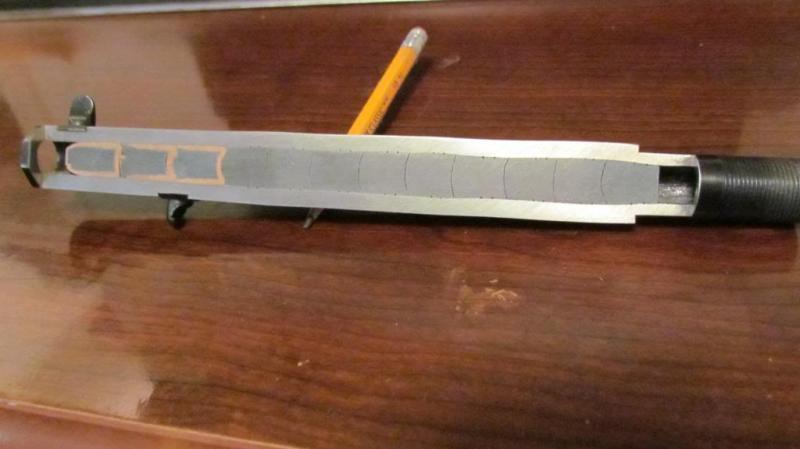 I think we counted 12 bullets in this barrel. 1. Don't load jacketed bullets to very low velocities. 2. If you don't see holes in the target, stop shooting! This barrel came off of a Uberti revolver, I think it was a 45Colt? A replacement barrel was ordered, installed and everything seems to be shooting fine. No, it's not mine. |
|
|
|
Post by hounddogman on Sept 23, 2024 18:50:48 GMT -5
Appears to be a Remington 1858 clone barrel. Crazy.
|
|
gnappi
.375 Atomic
  
Posts: 1,604
|
Post by gnappi on Sept 24, 2024 1:36:46 GMT -5
Here's a pic to share with your reloading students.  I think we counted 12 bullets in this barrel. 1. Don't load jacketed bullets to very low velocities. 2. If you don't see holes in the target, stop shooting! This barrel came off of a Uberti revolver, I think it was a 45Colt? A replacement barrel was ordered, installed and everything seems to be shooting fine. No, it's not mine. Ha, a neighbor once did that with some plastic bullets that used only a primer in his super Blackhawk. His target was taped on a sealed cardboard box and he couldn't see the holes in the bullseye because there were none but he assumed they were there :-) . |
|
|
|
Post by Quick Draw McGraw on Sept 24, 2024 20:07:34 GMT -5
I really appreciate all of the input. To be more specific, I have been reloadong for 9 years and I agree that reloading manuals are the best place to start. I own several and I'm very fond of my Hornady manual. But some times for some of the rarer cartridges I load for, finding any data is hard. And sometimes what I can find from a reliable source has powders or bullets that aren't available anymore and the closest ones are off by as much as 20 grains. Software that can tell me safe ranges would be great. I don't mind working up, but I get nervous when I don't have anything to go off. I don't like guessing. I'm not skilled enough to do that. My main focus is loading something that I can be be pretty certain is safe.
That, and sometimes even reliable sources give data yhay turns out to be questionable. I got some reloading data from the Dan Wesson Forum that came from the old Dan Wesson site for the .360 Dan Wesson using True Blue powder. I loaded five test rounds. After firing the second I stopped. It felt really strong and off. Sure enough, I had two punctured primers! I pulled the bullets on the other 3 and never used that powder with that cartridge again.
I'm trying to get some extra data for some rarer cartridges such as .357 Max, .360 DW, .40 Super, .445 Supermag, .500 Linebaugh, .500 Maximum, and .50 Alaskan.
|
|
|
|
Post by bigbore5 on Sept 24, 2024 21:00:40 GMT -5
You probably won't find all those cartridges in every database. GRT and Quickload cartridge design features can be used to enter the cartridge dimensions.
|
|
|
|
Post by Quick Draw McGraw on Sept 24, 2024 21:09:29 GMT -5
You probably won't find all those cartridges in every database. GRT and Quickload cartridge design features can be used to enter the cartridge dimensions. That sounds like something I can work with. I appreciate the info on that. |
|